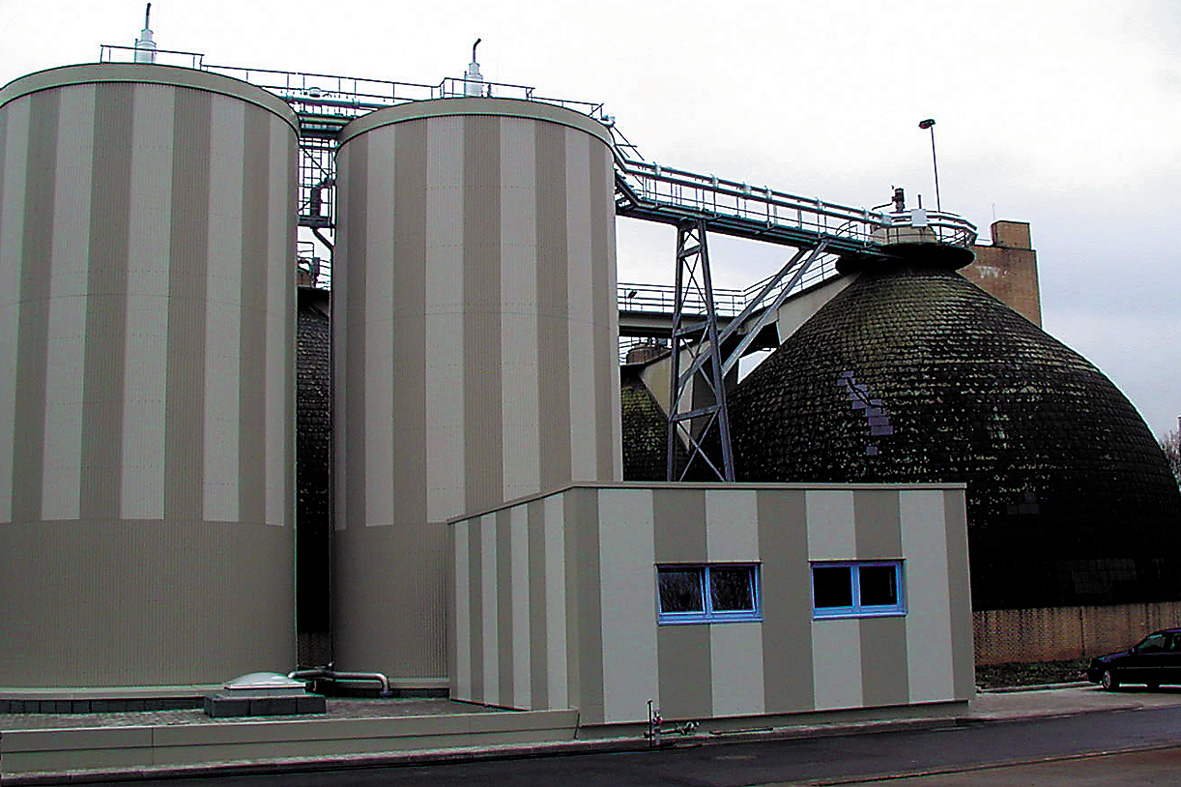Less sewage residues, more energy
The Fraunhofer IGB has developed a high-rate process for the digestion of sewage sludge. In the Heidelberg municipal sewage plant, it was integrated into the existing disposal line a year ago. This means that the plant can save costs, gain energy and at the same time has to dispose of less remaining organics.

The Fraunhofer Institute for Interfacial Engineering and Biotechnology has developed a high-rate process for the digestion of sewage sludge. In the Heidelberg municipal sewage plant, it was integrated into the existing disposal line a year ago. The balance to date: The Heidelberg municipal sewage plant today converts the sewage sludge into biogas much more quickly and effectively using a much smaller volume. This means that the plant can save costs, gain energy and at the same time has to dispose of less remaining organics.
On behalf of the Abwasserzweckverband Heidelberg (Association for Sewage), the Fraunhofer Institute for Interfacial Engineering and Biotechnology (IGB) in April of last year added a high-rate stage to the Heidelberg municipal sewage plant. The aim was to increase the economy of the digestion without putting the disposal line out of operation.
The scientists of the Fraunhofer IGB have combined the existing egg-shaped digestion with an upstream high-rate digestor. It operates with a load of 8 to 10 kg of organic dry matter per cubic metre and day and requires a digestion volume of only four litres instead of 60 litres per capita.
The concentrated sludge from the high-rate digestor provides the micro-organisms with the best possible living conditions. The first operating year has shown that they convert the sludge to bio-gas within approximately five days, instead of 20 to 30 days in the case of the common methods.
A satisfying bonus: The bio-gas yield of 0.6 cubic metres per kilo of added organic dry matter go to supply energy for the city of Heidelberg.
By increasing their bio-gas production, the micro-organisms reduce the organics by 50 to 60 percent, compared with about 40 percent in normal sludge decomposition. The municipal sewage plant has to deal with less remaining organics, so that the water removal and disposal of the residual sludge can be done more easily and economically.
 Fraunhofer Institute for Interfacial Engineering and Biotechnology IGB
Fraunhofer Institute for Interfacial Engineering and Biotechnology IGB